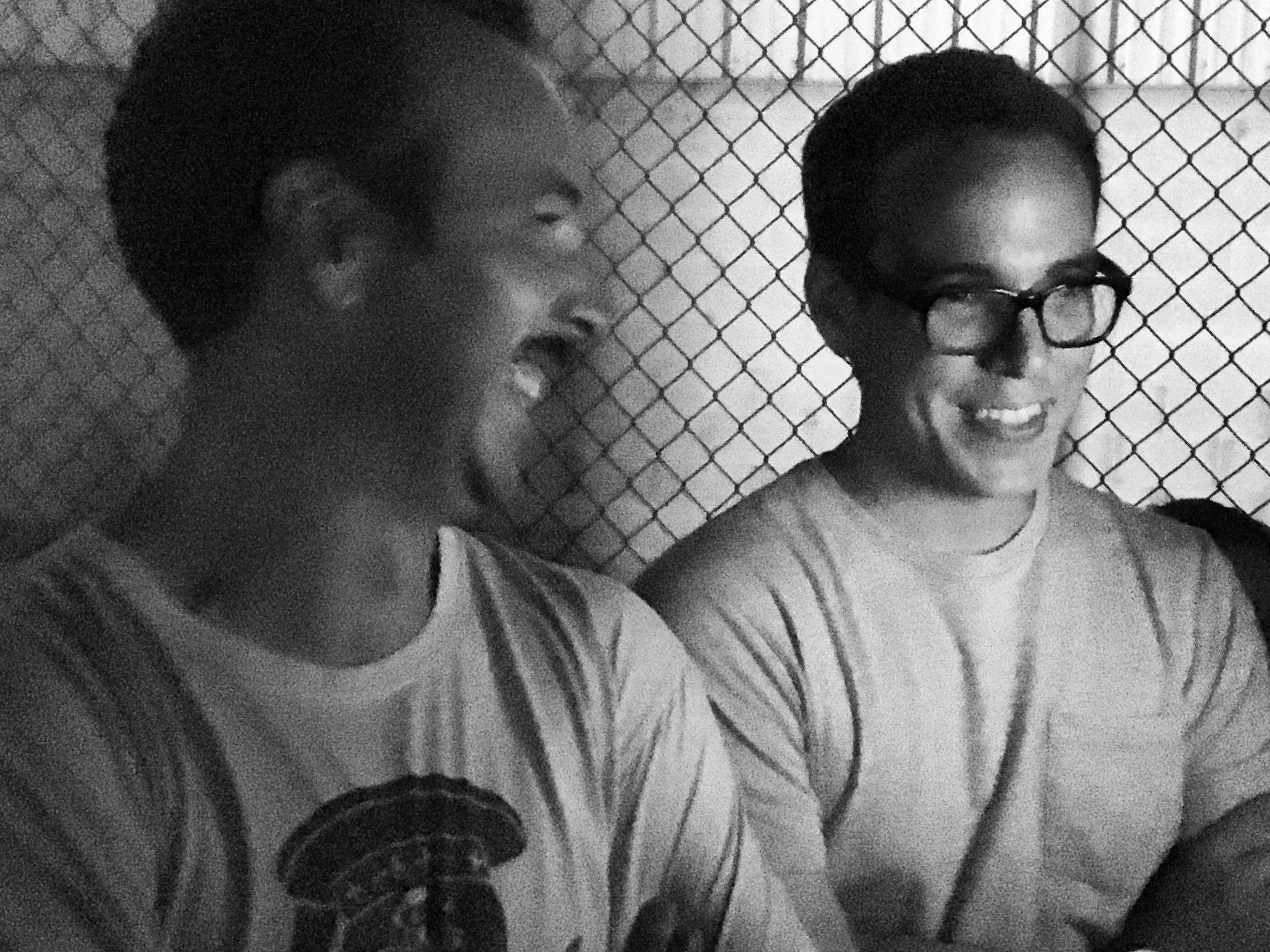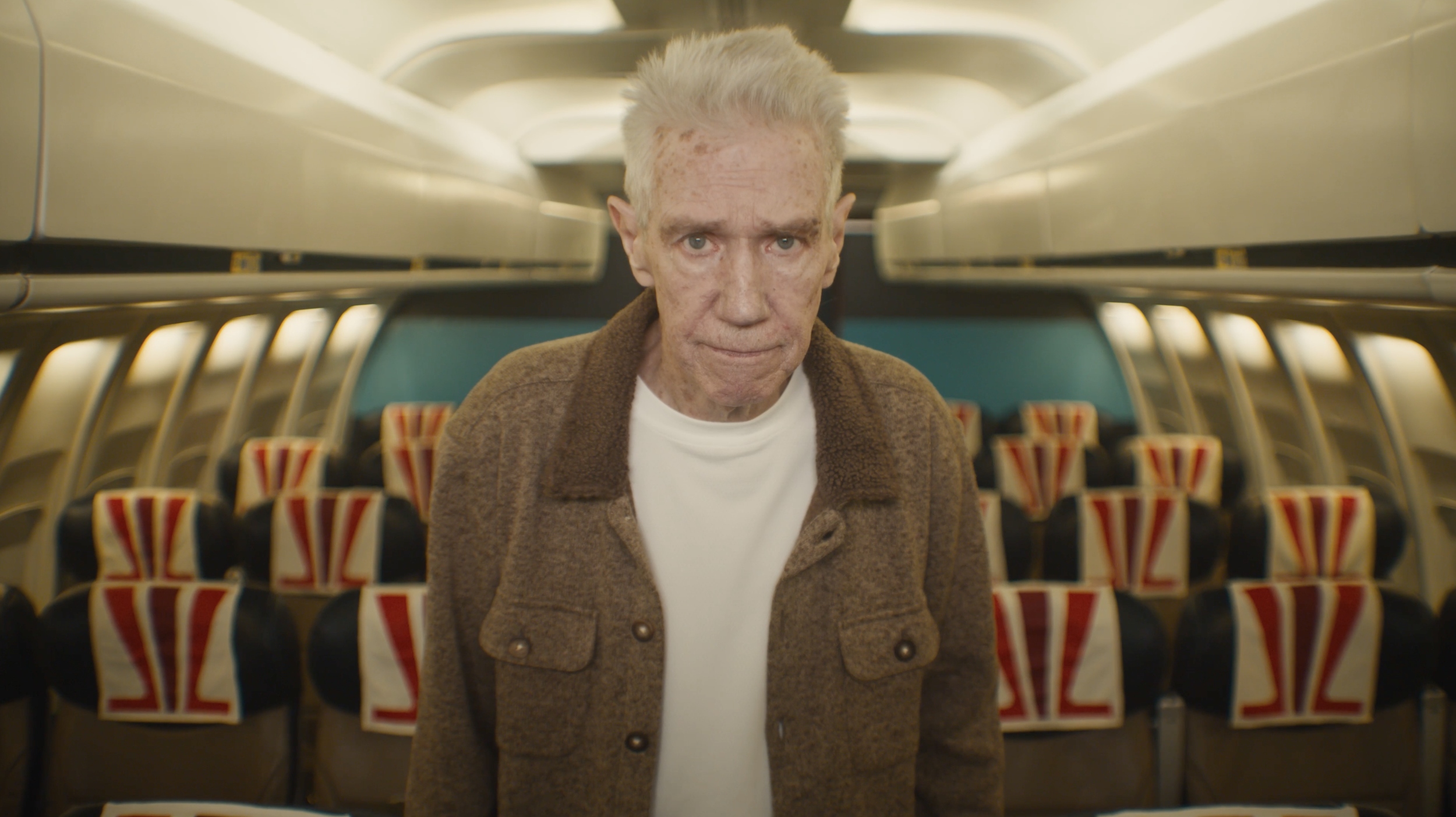Between 1967 and 1972, more than 130 American airplanes were hijacked. For a brief, surreal stretch of history, the skies were as lawless as the old frontier — a place where a man with a note, a gun, and a half-baked plan could change the course of his life.
D.B. Cooper became the legend.
But Martin “Mac” McNally became the story.
When filmmakers Eli Kooris and Joshua Shaffer first stumbled across Martin’s tale — via Danny Wicentowski’s The Final Flight of Martin McNally — they were stunned not just by the wildness of it, but by the fact that Martin was still alive to talk. “Danny was like, you know he’s in St. Louis, right?” Kooris recalls. “He told us Martin would be willing to meet. That changed everything.”
Within months, the filmmakers were sitting in Martin’s small, worn St. Louis apartment, cameras rolling, while a cat perched on a windowsill behind him. When Martin casually told the filmmakers, “She understands voice commands,” and then asked the cat to turn around — only for her to immediately obey — Shaffer remembers thinking, this man will carry the entire story himself.
Martin laughs about that moment now, calling it the “best part of the film,” but the filmmakers understood immediately that his charisma wasn’t something they could manufacture. It was lightning in a bottle — honest, raw, and impossible to ignore.
“That’s a hell of a way to make a score.”
Martin’s path into infamy began with a laugh — literally.
Driving down a Detroit highway in the winter of 1972, he heard radio commentators debating how to stop hijackings in the wake of D.B. Cooper’s infamous jump. One frustrated voice joked that the easiest solution would be to hand every passenger half a million dollars and call it a day.
Martin remembers turning to his partner and saying, “That’s a hell of a way to make a score.” The way he describes it, the plan formed instantly and almost casually: get guns, write an extortion note, grab a ticket, demand parachutes, take the cash, leap out the back of the plane.
“What could be easier?” he still says with a kind of mischievous disbelief.
The Jump: Terror-Free and Half-Prepared
The absurdity of the jump itself is classic Martin. He ordered five parachutes and two harnesses — but what he received were only reserve chutes. When he demanded to know where the backpacks were, the deliveryman shrugged and told him he had ordered wrong.
Martin checked his watch. There wasn’t time. “So I told him, ‘You’re trying to kill me. Get the hell off this plane.’”
Then he jumped.
He still insists it wasn’t terrifying. “There was no fear. I knew if the chute didn’t open, I’d hit at 130 miles an hour and that would be that.” Instead, he hit hard — feet, tailbone, skull — and staggered into the trees to sleep off the impact.
Helicopters swept low overhead. At one point he watched the shadow of a rotor pass inches from his hiding spot. But the next morning, after covering his chute with leaves and emerging onto a small road, he found himself hitchhiking in Indiana — exhausted, concussed, and still carrying the weight of his stolen fortune.
The car that stopped belonged to the chief of police.
The chief, unaware he was speaking to the man behind the nationwide manhunt, casually warned him to “stay off the road” because officers were searching for last night’s skyjacker. Martin nodded politely and said he’d heard all about it on the radio.
“When we heard that part of the story,” Kooris says, “we thought, that cannot possibly be true. But every court record backed it up. Even Walter Cronkite backed it up.”
The Line Between Comedy and Catastrophe
Martin’s story unfolds like a movie that refuses to choose between thriller and dark comedy.
One of the filmmakers’ favorite moments — one they still can’t believe is real — involves a man named David Hanley who, drunk at an airport bar, decided to single-handedly sabotage Martin’s hijacking by barreling his Cadillac down the runway.
“That's when I thought, this can’t be true,” Shaffer says. But it was. The collision shattered Martin’s carefully calculated plan and set off a chain of chaos that the filmmakers describe as “impossible to look away from.”
Martin’s reaction today is simple: “It shot holes in my operation.”
Inside the Control Unit: The Presidential Campaign
Some of the strangest turns in Martin’s life didn’t make it into the documentary — not for lack of interest, but because the story is too sprawling for 97 minutes.
Take 1978, when Martin and fellow inmate Garrett Trapnell attempted to run a full presidential campaign from inside a federal prison control unit. Trapnell floated the idea one morning, and Martin, ever the problem-solver, told him he’d research whether it was legally possible.
The next day, Martin reported back: “You can run. And if you get elected, you can take office.”
Within weeks, they had official forms from the Federal Election Commission and had christened their political party the National Christian Democratic Party. Their press releases reached newspapers across the country.
Then came the backlash. The Bureau of Prisons abolished free postage for inmates nationwide — a change that has cost federal prisoners nearly $300 million since 1979.
“That,” Martin says with a rare tone of remorse, “is my biggest regret. My stupid, blunderous campaign.”
“Friends are going to drop a dime.”
The eventual downfall of Martin’s 1972 hijacking wasn’t helicopters or crime-scene investigators. It was betrayal.
Two friends who had known about his plan months in advance surfaced after the hijacking and turned him in — one receiving $10,000, the other immunity.
“I didn’t realize friends would drop a dime, betray you, especially when there’s money involved,” Martin says. “Call me stupid. I just wasn’t criminally sophisticated.”
He pauses whenever he tells that story — not with regret for the crime, but with disappointment in the people he trusted.
A Story Told by the Only Man Who Lived It
When Martin watched the completed documentary, he didn’t gravitate toward the explosive scenes or the reenacted danger. Instead, he pointed out the small things — the realism, the attention to detail, the way the filmmakers captured the tone of a life that never quite made sense even while it was happening.
He laughs when he says that the cat scene remains his favorite moment. But he’s equally sincere when he talks about the film’s accuracy. “You covered everything. I think it’s going to do very well.”
Director Eli Kooris believes the success of the film — along with the podcast that preceded it — rests largely on Martin’s willingness to reveal everything. “Had he not been so open,” he says, “I’m not sure the story would translate the way it does.”
His partner Shaffer agrees: “He’s a fantastic storyteller.”
The Outlaw Who Refuses to Become a Myth
D.B. Cooper disappeared into legend.
Martin McNally, against all odds, lived to narrate his own.
The directors call American Skyjacker “a unicorn of a true-crime story.” It is grounded not in speculation or mythmaking, but in the voice of the man who survived the jump, the betrayal, the prison breaks, the political schemes, and the decades-long ripple effects of his own decisions.
Even Martin’s own relatives didn’t believe parts of his story until they saw the documentation — the hundreds of pounds of court records, press clippings, transcripts, and government files collected by journalist Danny Wicentowski.
“Ninety-five percent of what he says checks out,” Wicentowski has said. And the rest? “If the 95 percent is true, you can believe the other 5.”
American Skyjacker isn’t about idolizing Martin McNally. It's about preserving one of the most astonishing, stranger-than-fiction crime stories in American history — directly from the man at the center of it.
Special Thanks
This article — and the interview that made it possible — represents a collaborative effort that CineDump is genuinely proud of. As a lifelong fan of true crime, I knew there was no better partner for this conversation than Andrew Dodge, the creator and host of Unforbidden Truth, a podcast that has become one of the most compelling and respected voices in the true crime space.
Andrew’s experience is unparalleled. For more than eleven years, he has been corresponding with and visiting convicted criminals and murderers, giving listeners rare access to perspectives most people never hear. He doesn’t claim to be an expert, and that humility is part of what makes his work exceptional. He approaches every interview with honesty, humanity, and curiosity — qualities that make Unforbidden Truth one of the most authentic, hard-hitting shows in the genre.
When the opportunity arose to promote American Skyjacker, it felt only natural to hand the reins of the interview to Andrew. His ability to dig into the psychology and lived reality of criminal behavior pairs perfectly with a story as complex and unbelievable as Martin McNally’s. He brought depth, clarity, and respect to the conversation, and this feature is stronger because of his participation.
This collaboration is only the beginning. CineDump and Unforbidden Truth share a mission: to highlight the stories that challenge us, fascinate us, and force us to confront the stranger-than-fiction reality of crime in America. Working with Andrew was not only an honor — it was energizing, inspiring, and something we absolutely intend to revisit. There will be more interviews, more features, and more opportunities to cross paths in the future.
Andrew Dodge is one of the most important voices working in true crime today, and it is my privilege to support and spotlight what he does. Discover more of his exceptional work HERE.
Jessie Hobson











